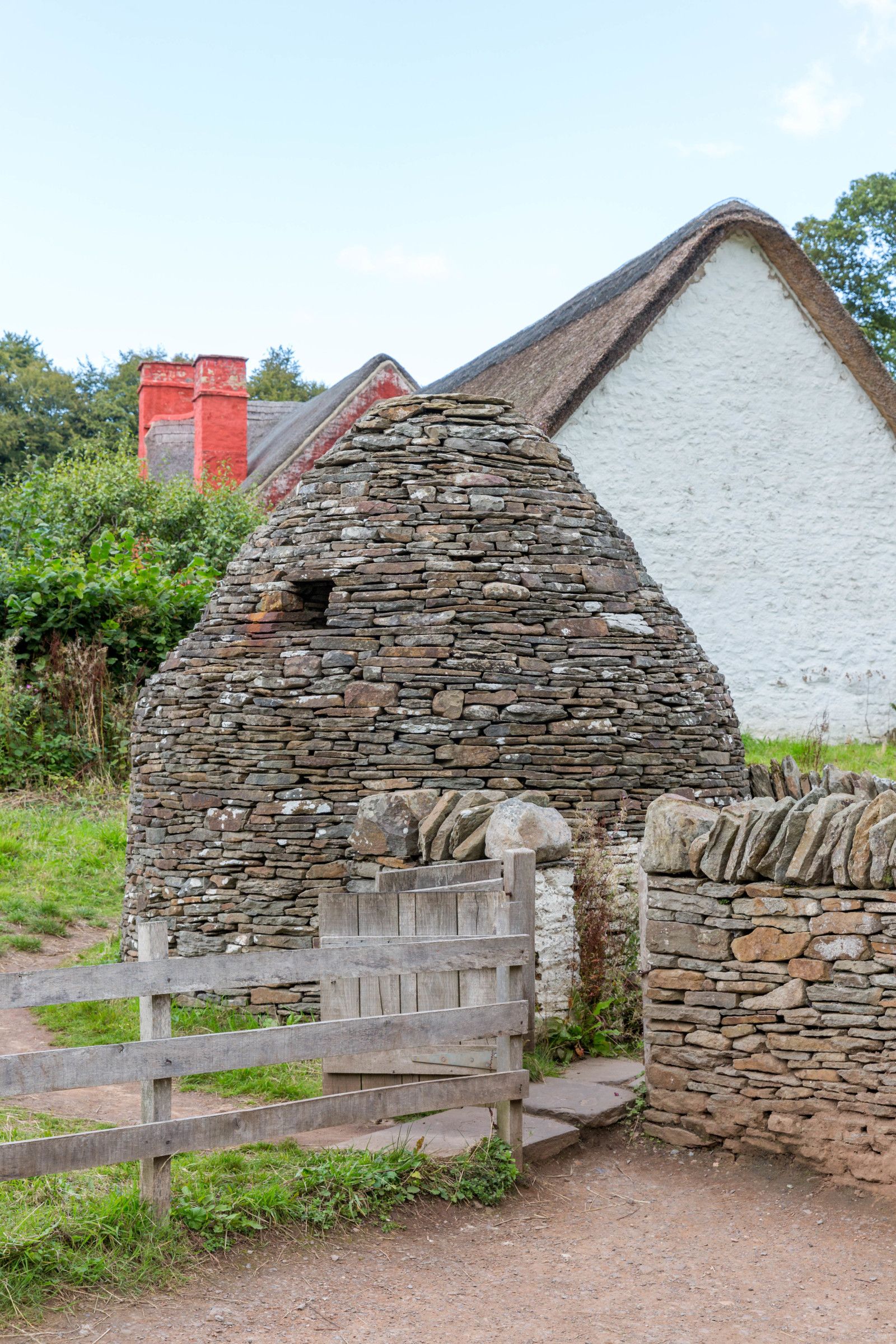The Pigsty

What was this building used for?
This building was used to keep pigs. It was built around 1800 at Hendre’r Prosser Farm near Pontypridd, Mid Glamorgan.
Like many pigsties in South Wales, it is circular in shape. The reason for this is that pigs love to dig in corners so a round sty made it difficult for them to burrow their way out.
There are fewer pigsties in this country now as the law changed in the 1950s to prevent people from slaughtering pigs at home. Also, during this time, cheaper meat started to be imported from abroad so there was less demand for home produced meat.
The pigsty was moved to the Museum in 1977.
What is the pigsty made of?
The pigsty is made of layers of flat stones which rise and gradually move inwards to form a dome. Its shape resembles a beehive. It has a flat stone on its top to cover the small remaining hole. We call this a ‘corbelled roof’.
Why did people keep pigs?
Pigs were important as they were a source of cheap meat and a means of living for people, particularly in working class areas. Fattening a pig to be sold was also a way to pay the rent.
Pigs eat almost anything from kitchen waste to grass so we could say that they are good for recycling too. They are efficient animals for converting food into meat in a short time.
Friends and neighbours would take it in turns to slaughter a pig and gather to assist with the preparation and the butchery, making it a social occasion.
Every part of the pig could be used; their stiff bristles were used for making brushes and their blood to make black pudding which is a type of sausage. In Tudor times, a pig’s bladder would be blown up, knotted at one end and used as a ball. This was the earliest form of football.
People would say, ‘You can use every piece of a pig except its squeal!’
Did you know?
Despite what people think, pigs are very clean animals. Today we sometimes use the term ‘sweating like a pig’ but pigs are unable to sweat so they roll in the mud to cool down and may even use it as a sunscreen! However, their skin and flesh are very similar to us humans. A pig’s valves are sometimes used by surgeons for heart patients as the animal’s heart is similar in size and function to that of a human.
Pigs are very sociable animals and when sleeping in a pigsty like this one, they huddle together because they find it comforting, sometimes with their noses touching. You can see pigs at Llwyn-yr-eos farmhouse at the Museum.
The Welsh word for guinea pig is mochyn cwta which means short pig.
Over 500 years ago, household items such as plates and pots were made from a cheap clay called ‘pygg’. When people had a few extra coins, they would simply drop them into their clay jars which they referred to as a ‘pygg’ bank or pot. This may be how children’s piggy banks used today acquired their name.

Building facts:
- Original Location: Rhydfelen, Pontypridd, Rhondda Cynon Taff (Glamorgan)
- Date originally built: c.1800
- Dismantled & rebuilt at St Fagans: 1976
- Opened to the public: 1977